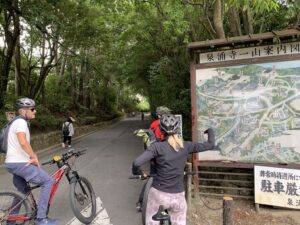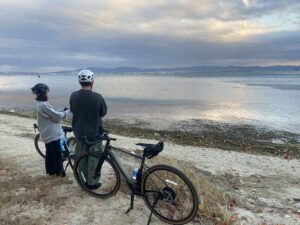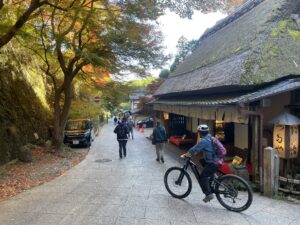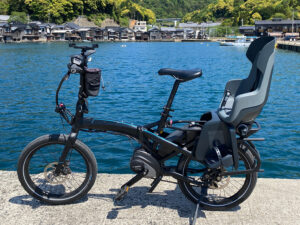
"Kyoto should be explored by bicycle"
Speaking of Kyoto, many people think that it is a city that should be explored on foot.
In fact, that is based on information for outside tourists. If you ask people who actually live in Kyoto, "What is the most convenient means of transportation?", everyone will answer "bicycle". This has become even more prominent since the invention of the E-Bike.
Kyoto's bicycle routes are difficult for foreigners to understand
There's a reason for this: unlike Western cities, old Japanese towns are all extremely narrow and made up of alleys with unclear divisions.
As a result, while the main streets that are easy for foreigners to understand are jammed with hellish traffic, 100 meters further in you'll find beautiful alleys where locals can coolly get around on their bicycles.
Furthermore, the roads up the hills, where you would hesitate to ride an E-Bike, are surprisingly deserted, with only local residents occasionally strolling around. And it is in these places that facilities with long histories stand side by side, which is only natural considering Kyoto's history as a "city of floods."
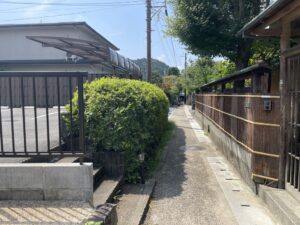
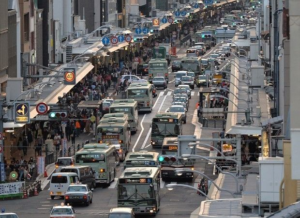
Bicycles and E-Bikes are the best way to experience Kyoto's traditional culture
So the areas you can walk to or drive to are modern, ancient areas customized for commerce.
And the beautiful, quiet areas that retain their 1000-year-old history are only accessible to experienced travelers, repeat visitors, and local residents.
This means that you can only get the best experience by doing your research and exploring by bicycle or e-bike.
If you're lucky enough to have come across this site, our local guides will show you the best cycling spots and routes!
1. Kamo river

20km(12mi)~
Half day~
Road situation;
Protected Bicycle Sidewalk
The Kamo River is the gateway to cycling in Kyoto, with many different routes branching off from it.
The upper reaches of the river connect to scenic mountain routes such as Kitayama, Kifune, and Ohara that are popular with advanced cyclists, while the lower reaches connect to Nara, Osaka, and Uji.
The Kamo River runs through the center of Kyoto, and it was the site of famous tea ceremonies and poetry gatherings, the subject of countless paintings and poems, and the site of wars, assassinations and executions.
It is still popular with locals today, and is bustling from morning to night with people going to cafes along the river, picnicking, and jogging.

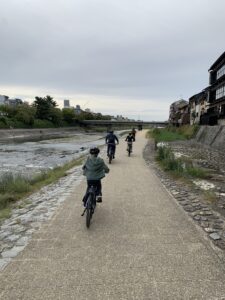
The first recommendation is the 7km stretch from Kamigamo Shrine to Gojo Ohashi Bridge. There are bicycle paths on both sides, and the views are different on each side, so you can enjoy the round trip route.
If you are able to rent an e-bike or high-performance bicycle, try the route from Kifune Shrine upstream or Fushimi Inari Shrine downstream to Uji. You can enjoy completely different aspects of nature and culture.
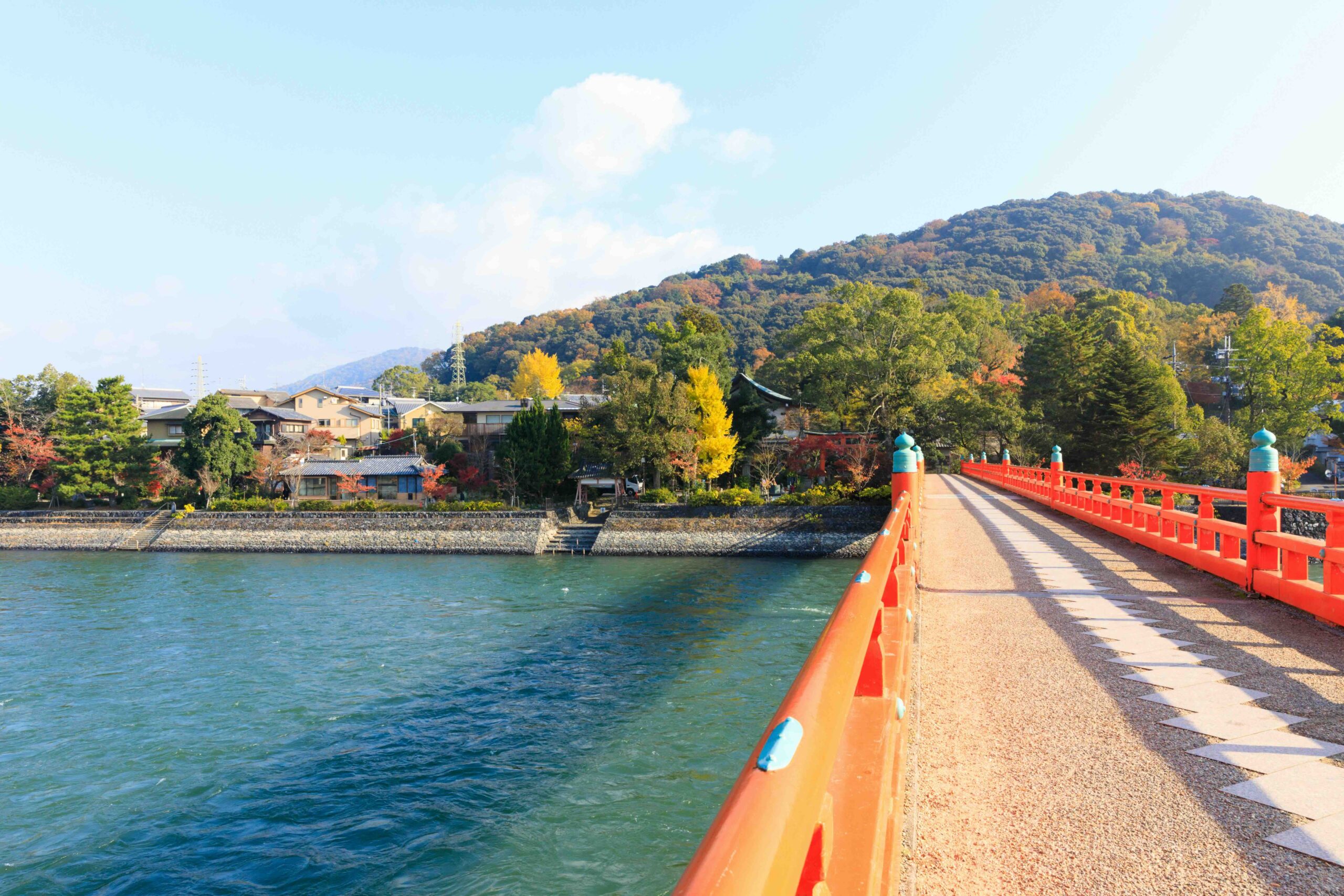
As mentioned at the beginning, Kamogawa River has a dark history as the river that has sucked the most blood in Japan.
That is why many cherry trees and shrines were built to mourn the dead, which is what has led to its current beauty and profundity. Before and after your run, be sure to research the history of the Kamogawa River.
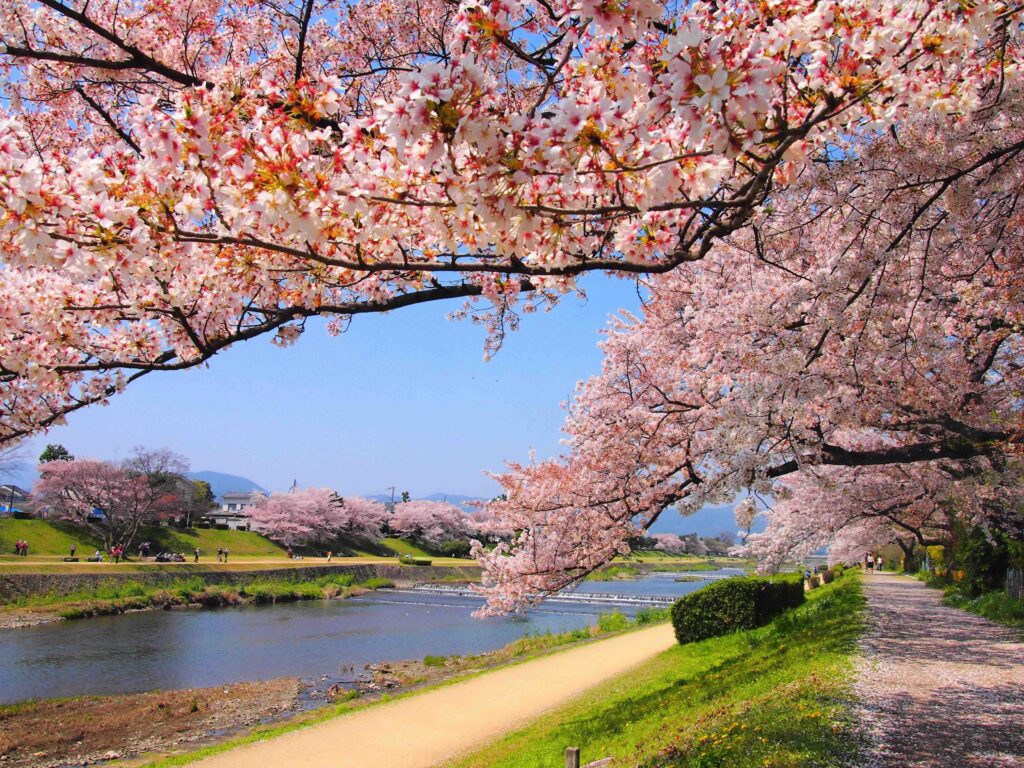
Please also refer to this article.
Eastern Kyoto Gion~Fushimi~Nanzenji Loop Course(1day)
Most of the tourist activity in Kyoto is concentrated in the eastern area from Gion to Fushimi. The area aroun […]
2. Philosopher's Path (Branch line of Lake Biwa Canal)

2km(1mi)~
Half day~
Road situation;
Protected Bicycle Sidewalk
&
Narrow alley where almost no cars pass
This walking path stretches for about 2km and connects Ginkakuji Temple and Nanzenji Temple.
It was named after early 20th century philosopher and Kyoto University professor Nishida Kitaro, who used to walk this path every morning to lose himself in thought.
There is a gravel road for bicycles next to the cobblestone sidewalk. A normal bicycle offers a lot of resistance and can be tiring, but an E-Bike makes it more comfortable.
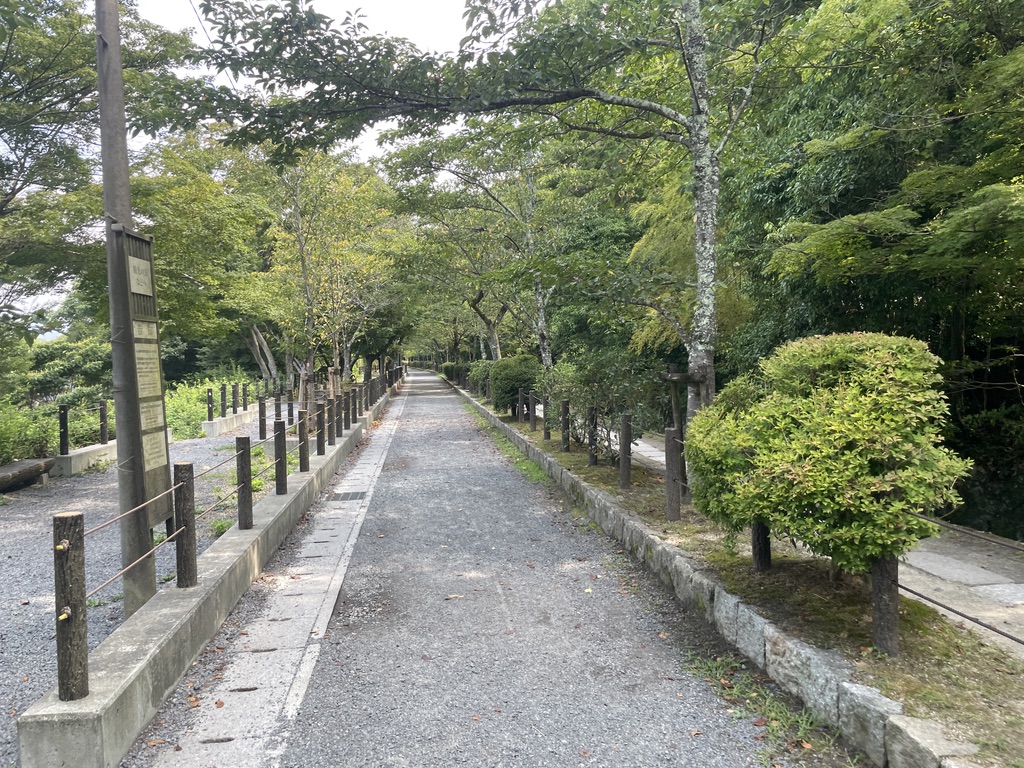
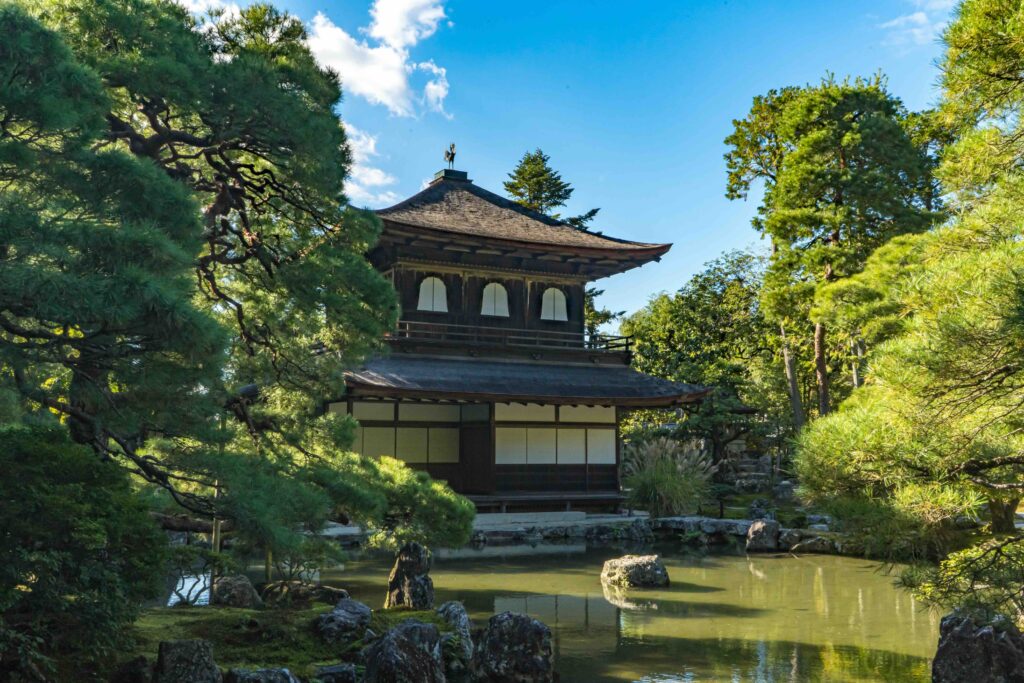
Ginkakuji Temple at the northern end is a very charming temple.
Further north is the Shirakawa Canal, a quiet path along a canal that takes you comfortably to the Kamo River in about 3km.

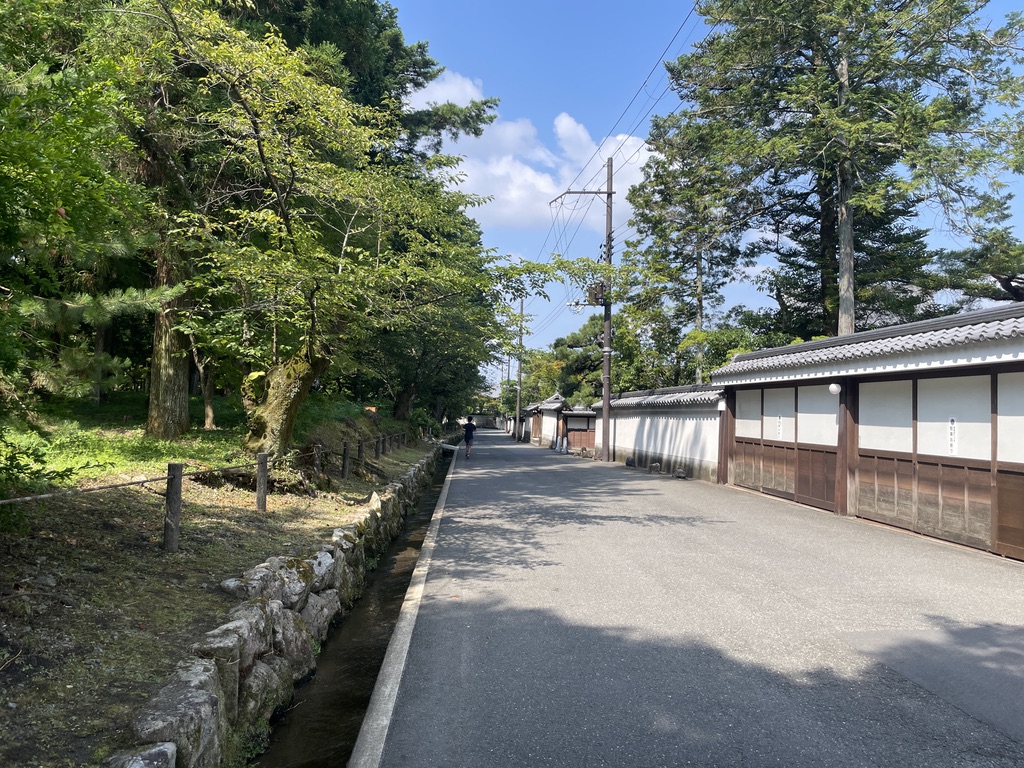
At the southern end is Nanzenji Temple, which has a very vast area and temple town. It's also a lot of fun to explore the maze-like alleys.
If you go out onto the main road, you will suddenly be hit with terrible traffic and congestion, so it's best to use the back streets to get around.
If you go west from Nanzenji Temple, you will reach Heian Shrine. It is a restored palace from 1000 years ago, and you can feel its majesty by cycling in the large square in front of it.
This is called the First Lake Biwa Canal.
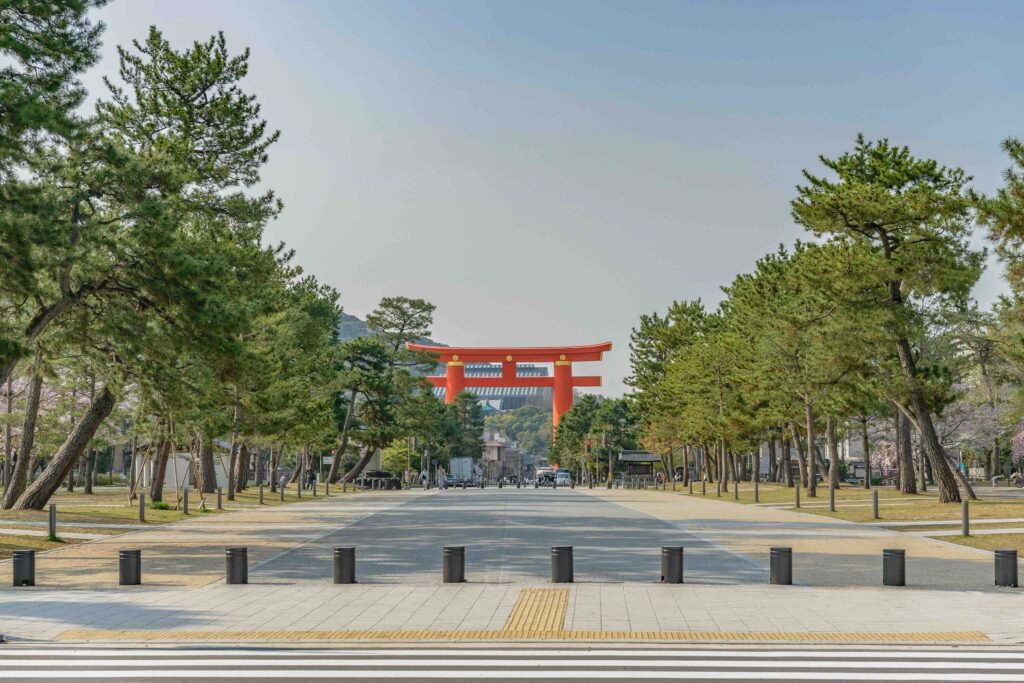
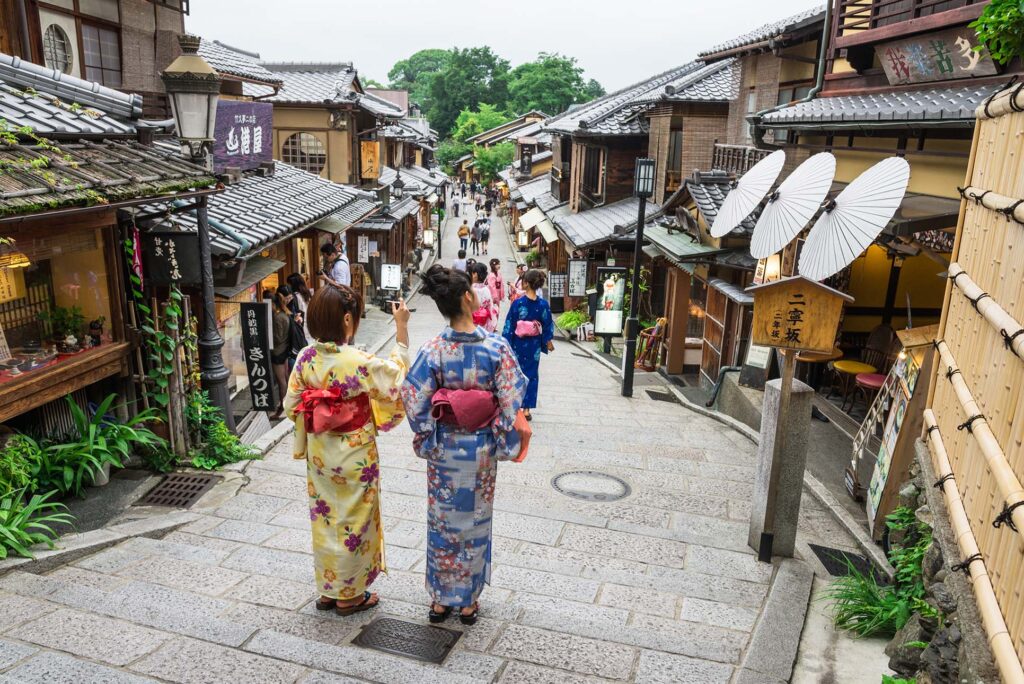
Going south from Nanzenji Temple, you will come to Sannenzaka and Gion. It is a very crowded spot, so it is best to park your bike nearby and explore.
Please also refer to the article on bicycle parking.
You can avoid the crowds to some extent by taking the back paths.
As the area has many slopes, the e-bike is highly recommended.
3. (2nd)Lake Biwa Canal

Round trip 10km~
Half day~
Road situation;
Protected Bicycle Sidewalk
&
Narrow road with a few cars passing

This canal was constructed at the end of the 19th century to bring water from Lake Biwa, Japan's largest lake, to Kyoto.
Part of the canal is in a tunnel and the section between the main tunnels 1 and 2 is a pleasant protected cycle path.
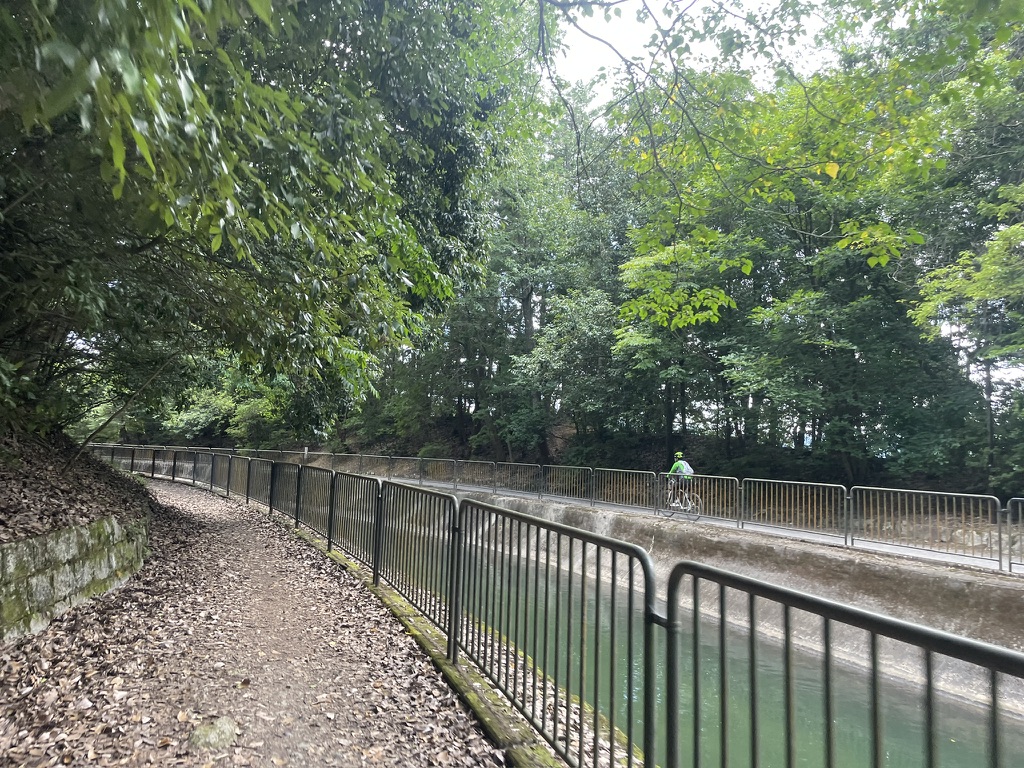
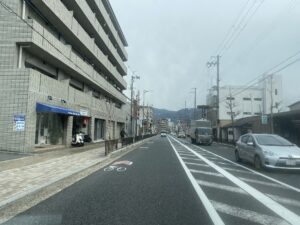
The only drawback of this cycling route is that you have to ride along a noisy main road for the 2km stretch between Nanzenji Temple and the second tunnel.
By the way, children, elderly people, and those in situations where the roads are dangerous are allowed to ride their bicycles on the sidewalk.
At the end of the bike path along the canal, there is a convenience store where you can take a break and plan your next trip.
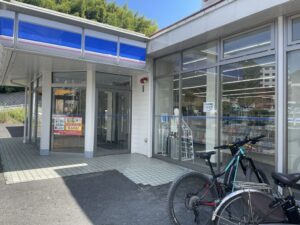
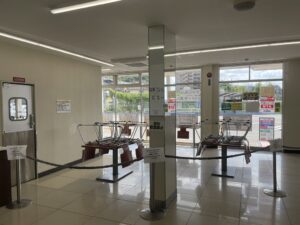
After walking about 200m down this old alleyway, you will come to a fork in the road that leads to Koseki Pass. To the left is a road that has little traffic but is open to cars, while to the right is a path for bicycles and pedestrians.
If you're on a road bike, keep left, if you're on an e-bike, keep right, and if you're on a city bike, it's best to turn back.
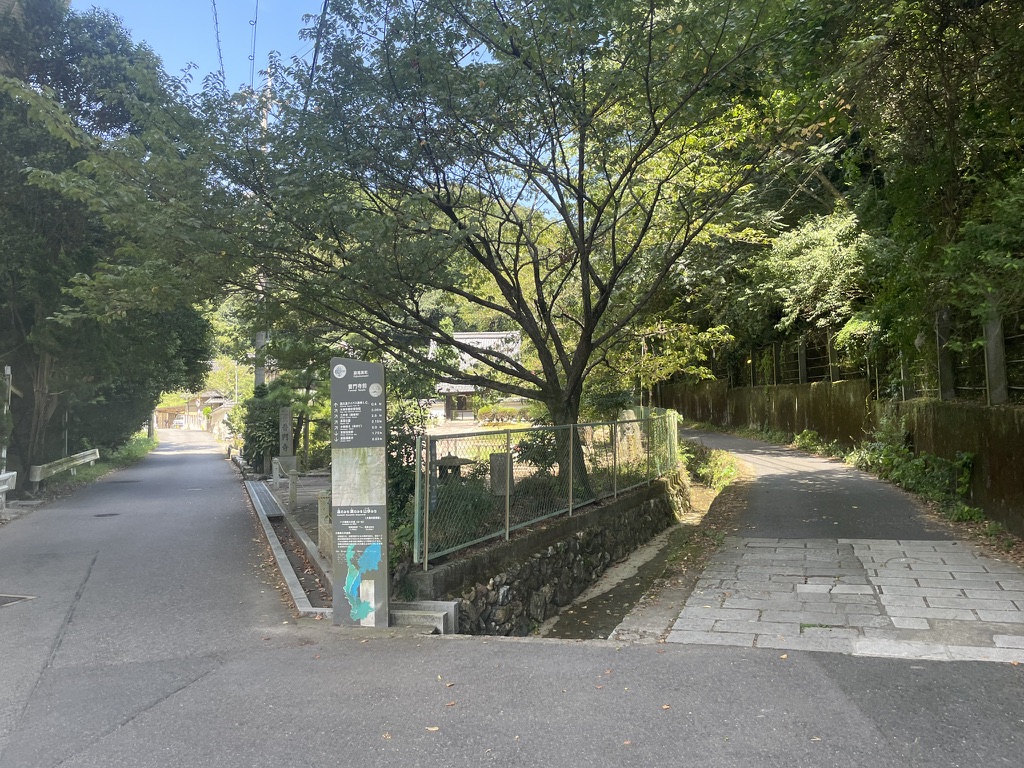
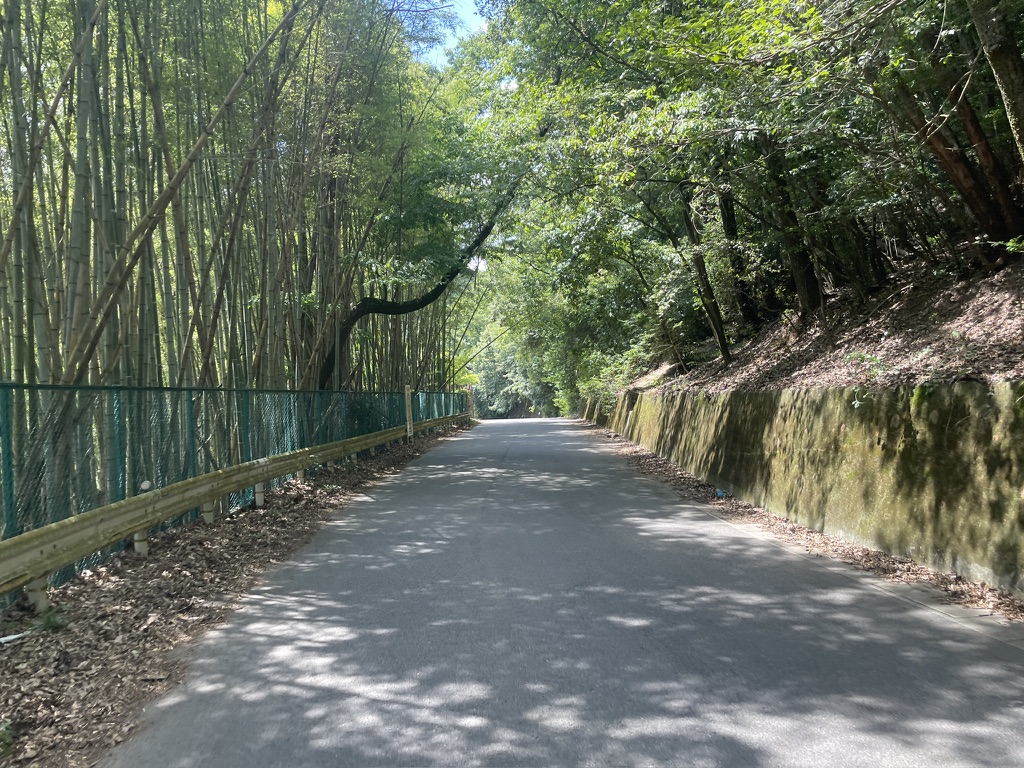
This Koseki Pass was one of the most important checkpoints on the Tokaido, a major artery of Japan that connected Kyoto and Tokyo. Unfortunately, the largest checkpoint, Osaka Pass in the south, has become an area completely dominated by cars due to modern road development, but Koseki Pass has been left behind and is a very enjoyable place to walk or cycle to.
After seeing the beautiful Lake Biwa, you can head north and return from Ohara(40km), or you can head back via Osaka Pass(8km) and endure the large number of cars, or you can turn back via Koseki Pass again(10km).
The Ohara Route is best suited for beginners on an e-bike and for advanced riders on a road bike, so we will explain it separately.
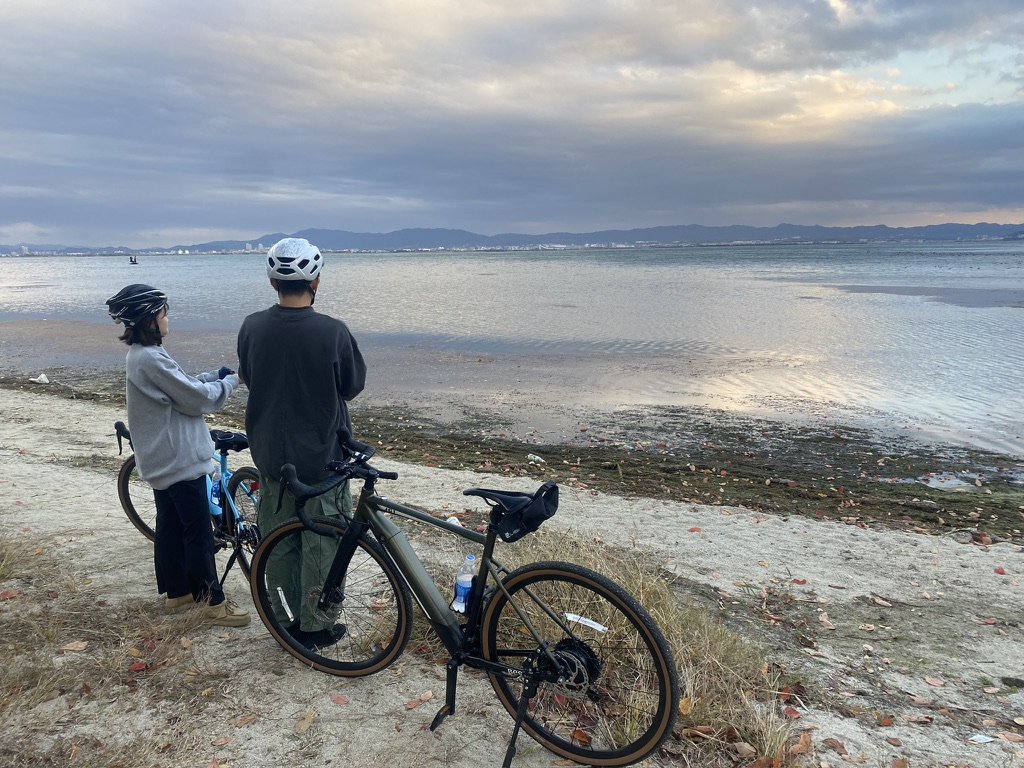
Please also refer to this article.
Cycling around Lake Biwa & Kyoto (1~6days)
Lake Biwa is the largest lake in Japan, and cycling around the lake is very popular.
It's very close to Kyoto, and an e-bike can take you to the western end of the lake in 15km (1 hour).
You can cycle along the canal from Kyoto to Lake Biwa, or take a short loop to Omihachiman, the old center of Lake Biwa, and back, or even cycle 200km around the lake over three days.
4. Katsura river (Arashiyama)

Round trip 10km~
1 day
Road situation;
Protected Bicycle Sidewalk
&
some requires you to get off and walk
The Katsura River is a large river that flows through the western area of Kyoto. From Arashiyama to the west, it is called the Hozu River. In the south, it merges with the Kamo River and continues to Osaka.
A bicycle and pedestrian-only road stretches for approximately 50 km from Arashiyama to Osaka Castle.

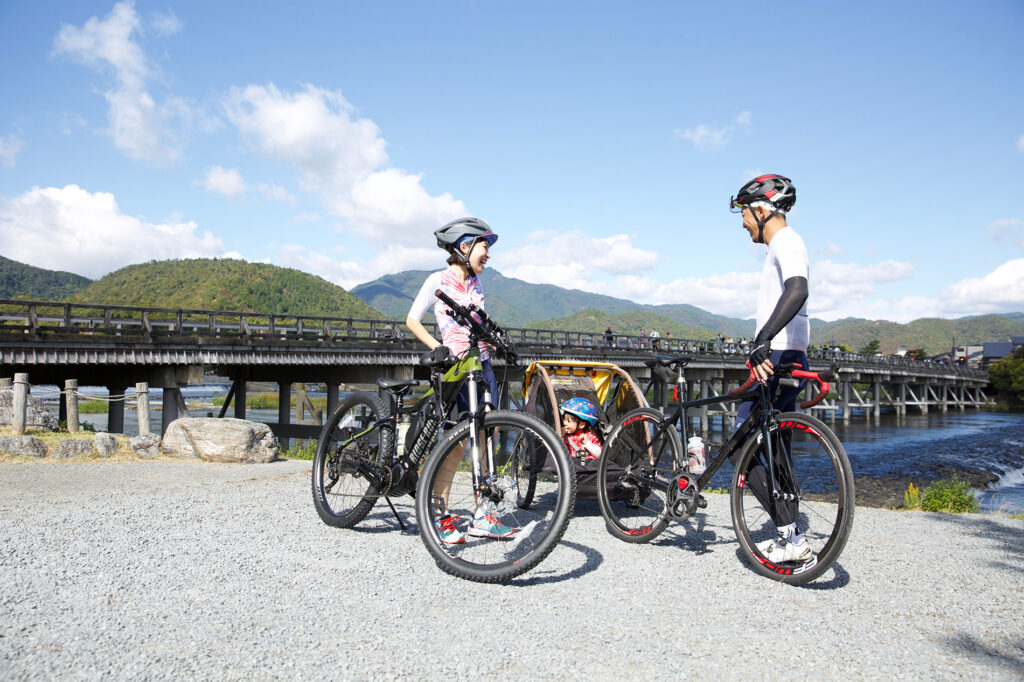
Togetsukyo Bridge, a landmark of Arashiyama, is very crowded.
On the other hand, it's so crowded that cars are moving at slower speeds than pedestrians, so if you drive slowly the risk of an accident is low, and it's fun in its own way to ride alongside a bustling crowd of people.
The first 500m from the station to the bamboo forest is packed with thousands of people, Instagrammers and YouTubers, but after that the number of people drops to less than 1%, making it an area that is extremely enjoyable for cycling.
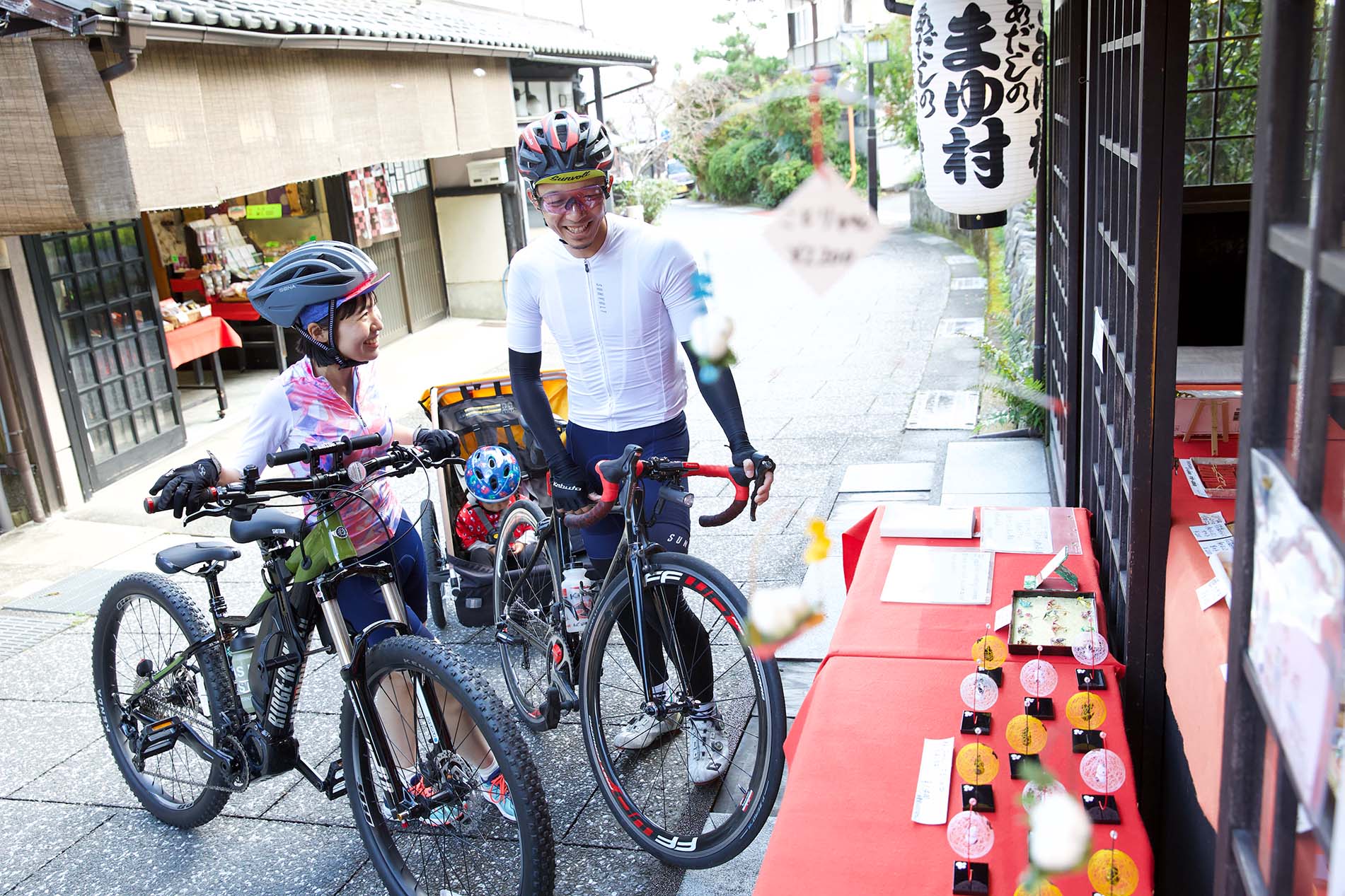
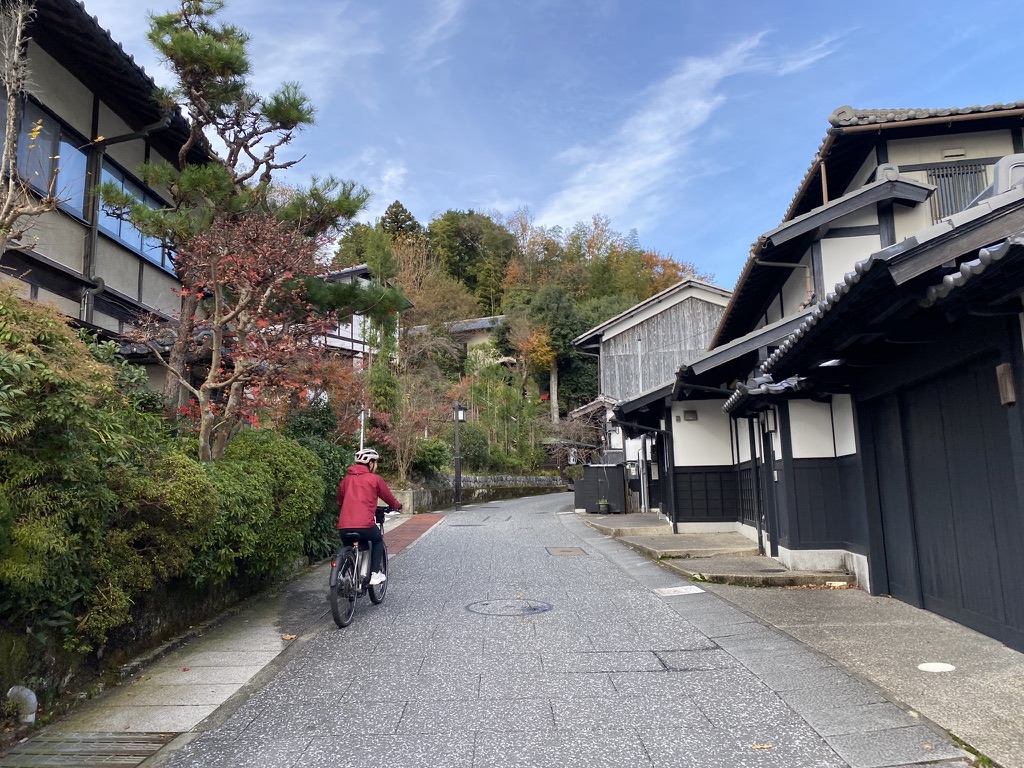
In fact, the original historical district of Arashiyama is to the north of this area, where are the tombs of successive emperors, the shrines and temples that protect them, and the remains of aristocrats' mansions.
Unfortunately, 99% of people are only interested in the bridge and the bamboo forest, so you can enjoy sightseeing in a surprisingly quiet environment.
This quaint torii gate marks the end of the historic district, and beyond that is a completely deserted forest.
It's a very steep slope, so it's truly "E-Bike heaven." I love the gravel road along the Hozu Gorge beyond this point, but I'll introduce the course for riding there in another article.


If you head east from Arashiyama along the mountain, you will come across a mysteriously well-maintained pond called "Hirosawa-no-ike" and a field area. This is the area where the graves of emperors who came after Arashiyama are located.
If you go south from Hirosawa Pond, you will come to a residential area, where you will find Kyoto Studio Park, a theme park and film studio that perfectly recreates the Edo period. It's a casual place, but quite enjoyable.
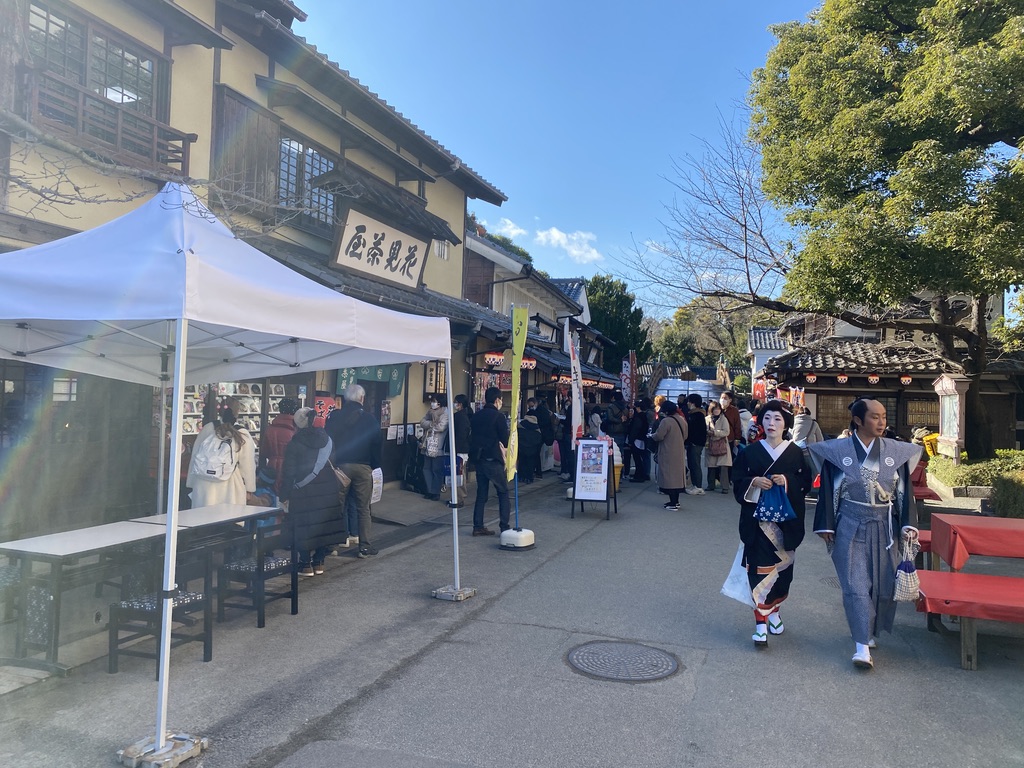
Please also refer to this article.
Western Kyoto Arashiyama~Kinkakuji Loop Course(1day)
The Arashiyama area in the west of Kyoto has flourished as a resort for ancient aristocrats, as the tomb of su […]
5. Cycling in Gion at night

10km~
1.5 hours~
Road situation;
Narrow alley where almost no cars pass
Japan is one of the safest countries in the world, many stores are open even at night, and women and children can walk alone. Cycling at night will be a special experience that you can't get anywhere else in the world
Kyoto's Gion and Ninenzaka are very crowded during the daytime and it's difficult to do proper sightseeing, but from the evening into the night it's very easy to ride and the nostalgic atmosphere is wonderful.

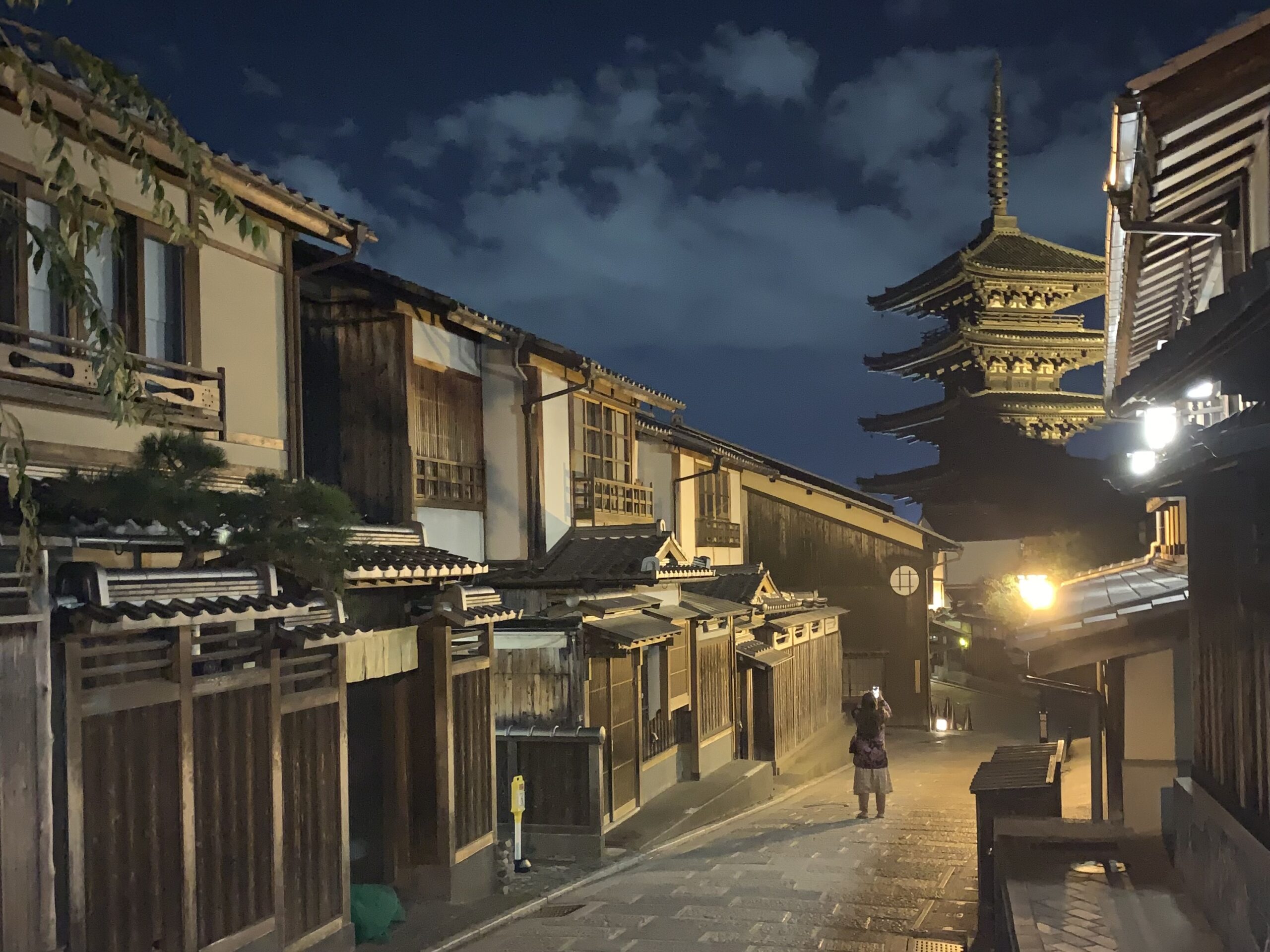
Cycling is prohibited on Ninenzaka and Sannenzaka during the day, but is permitted at night. However, there are many local residents and tourists who want to take photos, so please ride quietly, without stopping for long periods of time, and slowly.
Shoping Arcade
Japanese shopping streets are bright and ceilinged even at night, and izakayas and other establishments stay open until late.
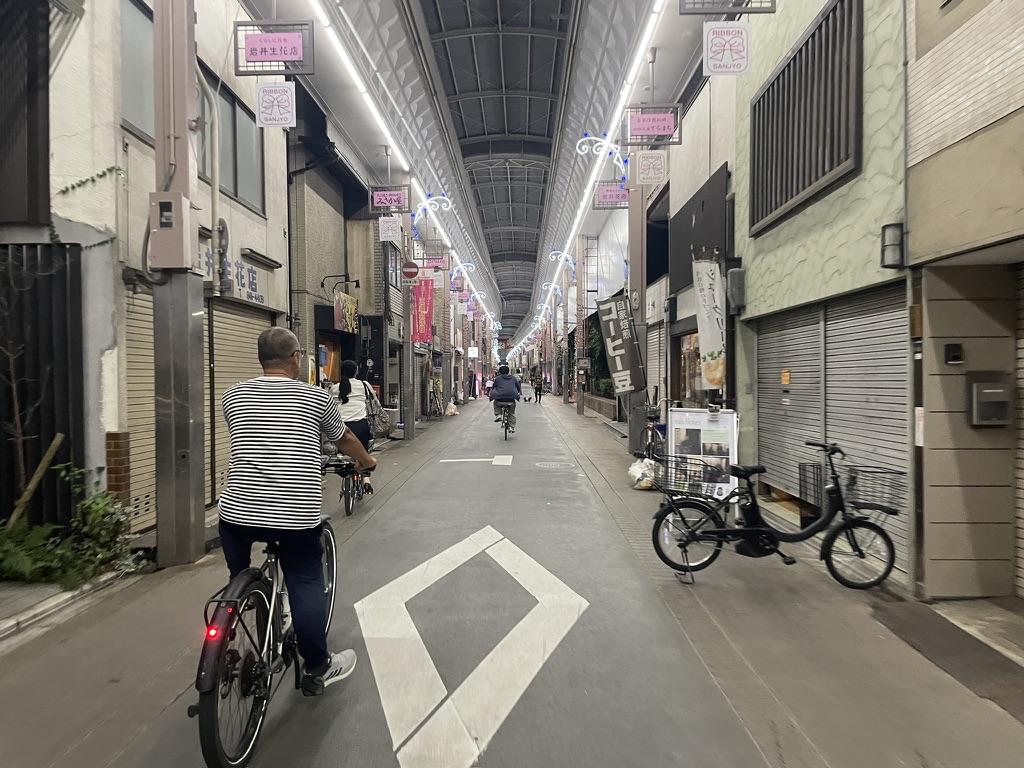

There are many shrines and temples in the city, which are also lit up at night.
Kamo River
The Kamo River is a place of relaxation for the people of Kyoto, and many people can be seen playing by the river, especially on summer nights.
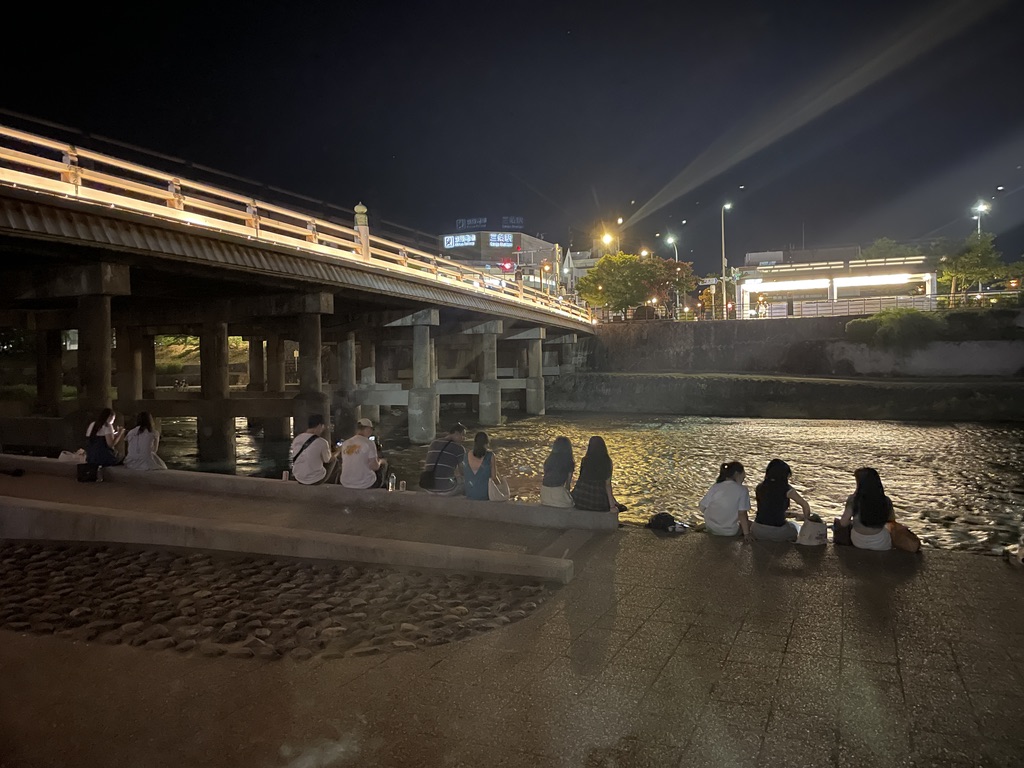
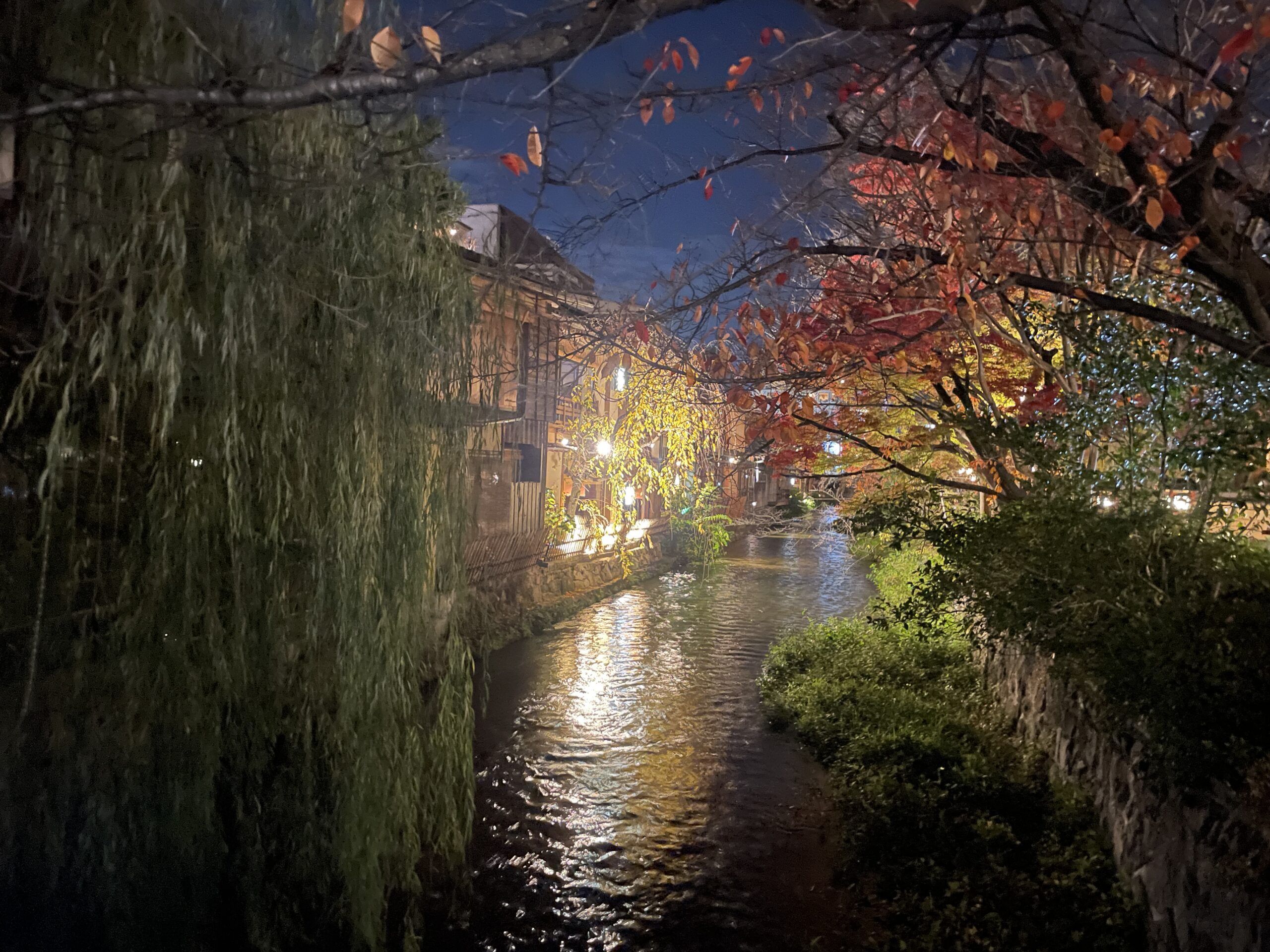
Gion
If you use an E-Bike, you can climb a hill and see the city lights. If you want to know about local recommended spots, please ask the staff when you rent.

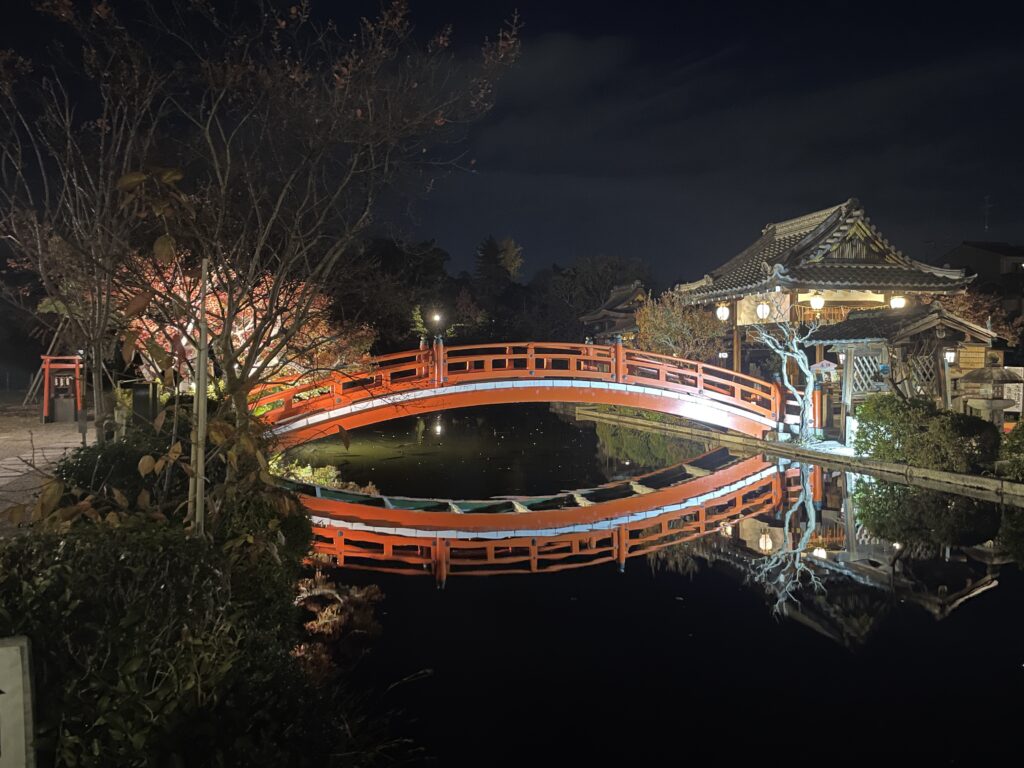
illuminated pond in Nijo
We know that nothing feels better than a drink after a bike ride. So if you make a reservation in advance, we can collect your rental bike.
Enjoy the luxury of cycling, stopping at your favorite izakaya for a drink, and then taking a taxi back to your hotel !
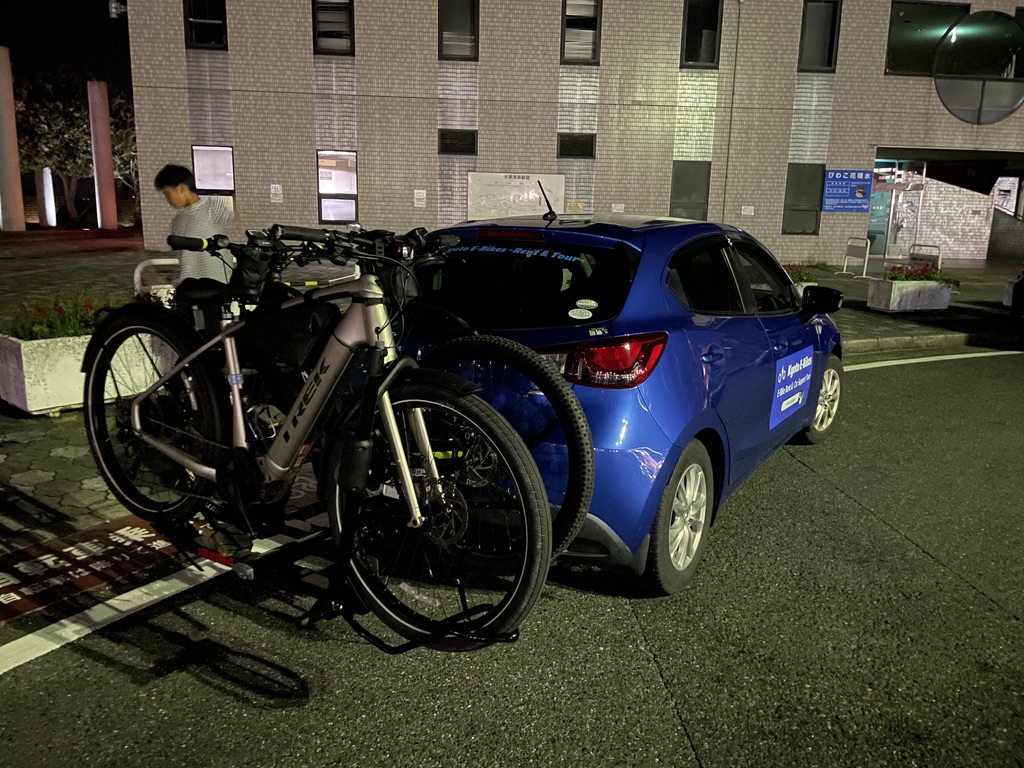
[Special1] Tango Peninsula

40km~
1~2 day
Road situation;
Roads with few cars
Our main base is the Tango Peninsula!
It takes 2-3 hours from Kyoto by car or train, but I can definitely say that it's worth the time.
It has a dynamic and clear beauty that is the polar opposite of the elegant and detailed beauty of Kyoto. It has the best sea, the best mountains, rivers, and old towns.
If you ride through both Kyoto and Tango, I think there is no better cycling experience in Japan.
For detailed route information, please check out the relevant article!
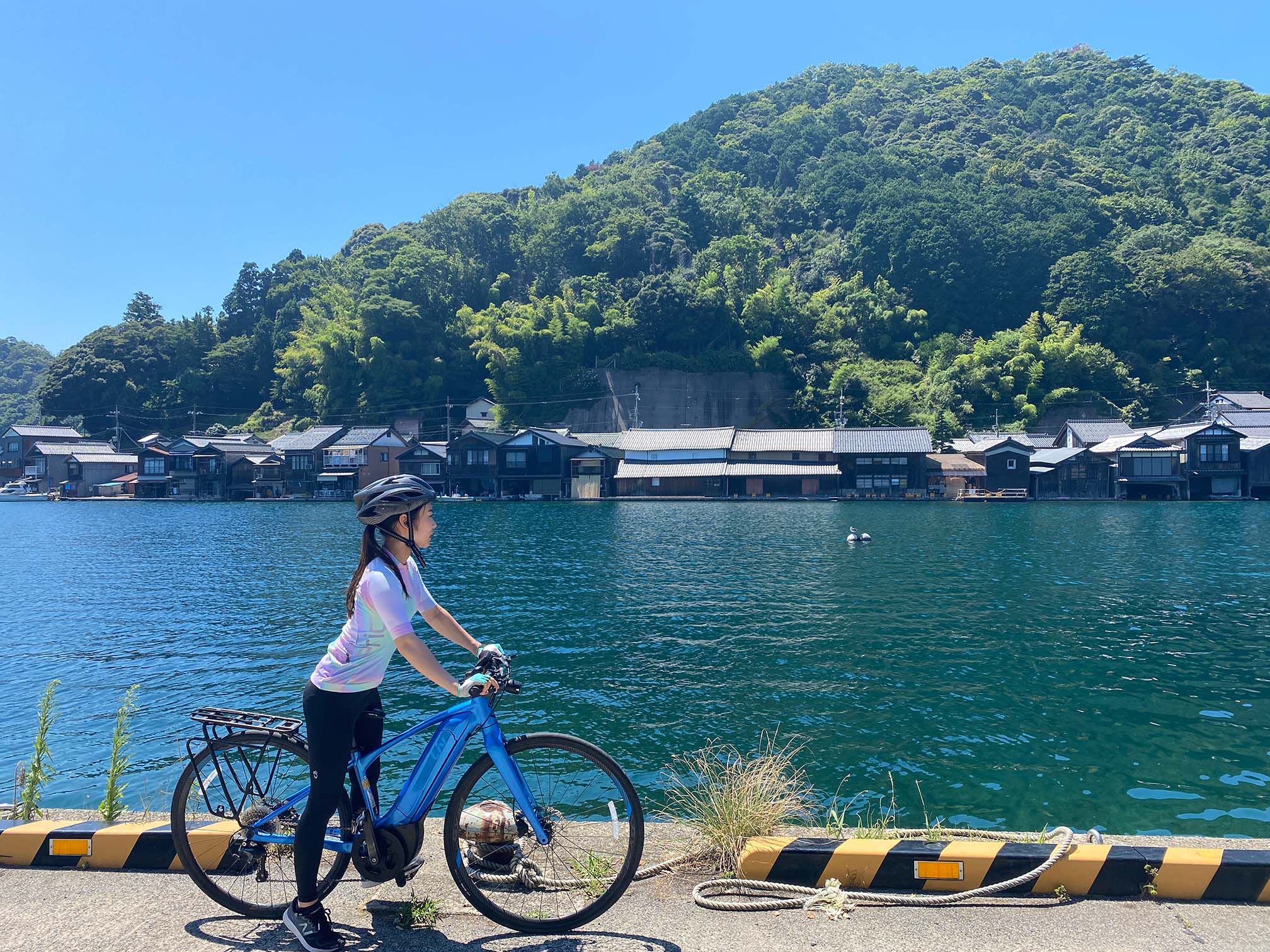

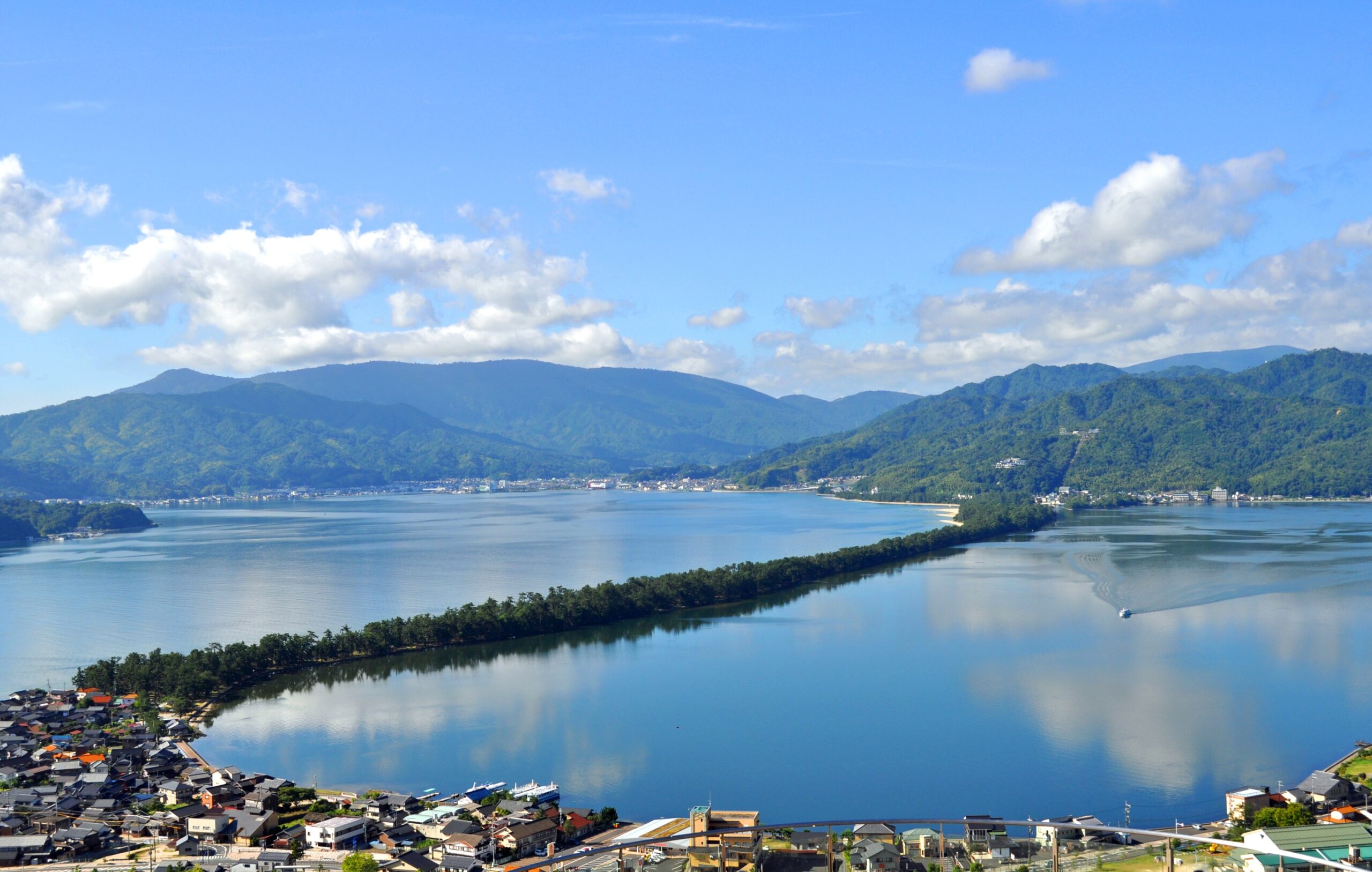
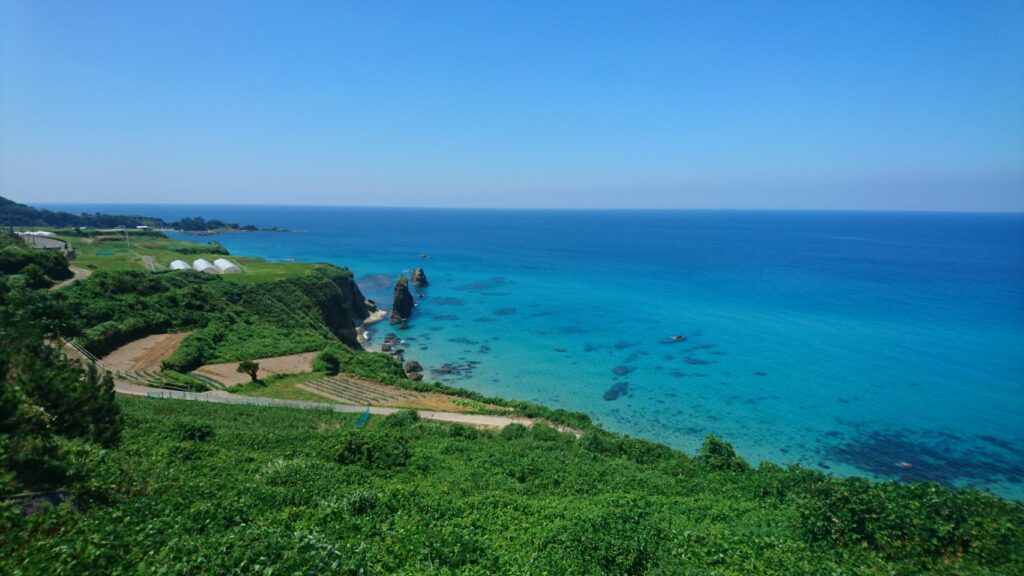
Our main base is the Tango Peninsula!
It takes 2-3 hours from Kyoto by car or train, but I can definitely say that it's worth the time.
It has a dynamic and clear beauty that is the polar opposite of the elegant and detailed beauty of Kyoto. It has the best sea, the best mountains, rivers, and old towns.
If you ride through both Kyoto and Tango, I think there is no better cycling experience in Japan.
For detailed route information, please check out the relevant article!
[Special2] Wazuka tea farms to Nara

40km~
1~2 day
Road situation;
Roads with few cars
The course is under investigation.
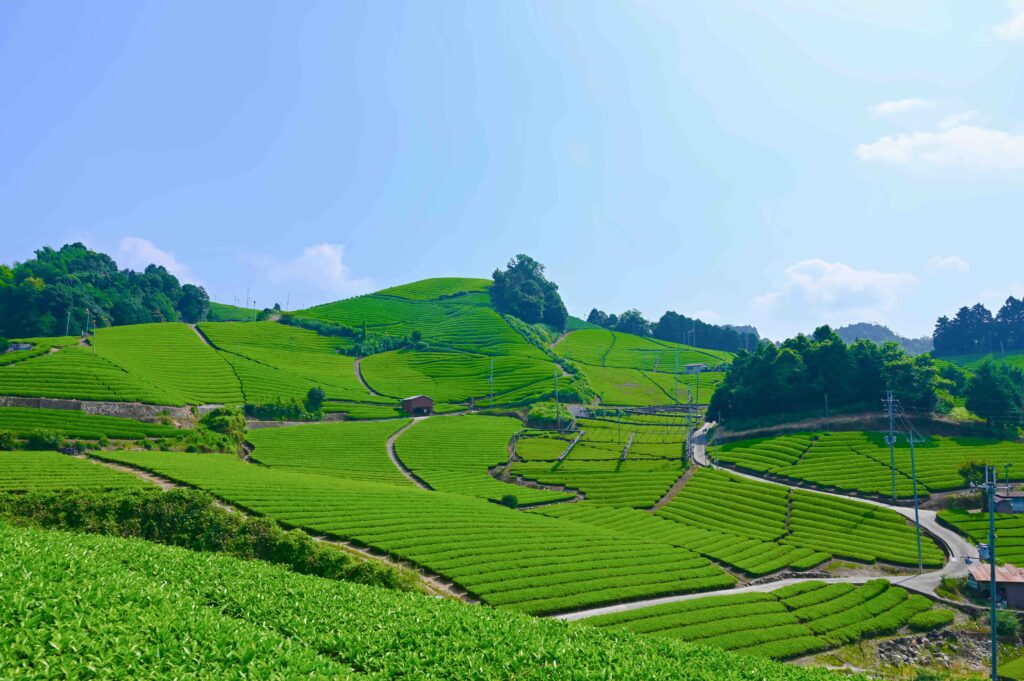
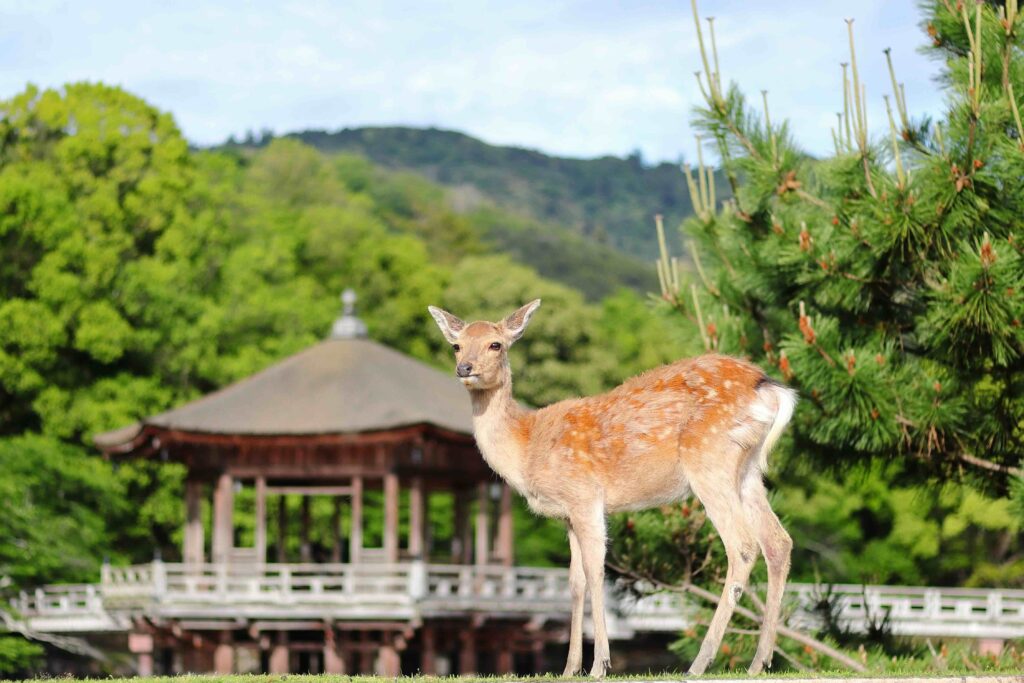
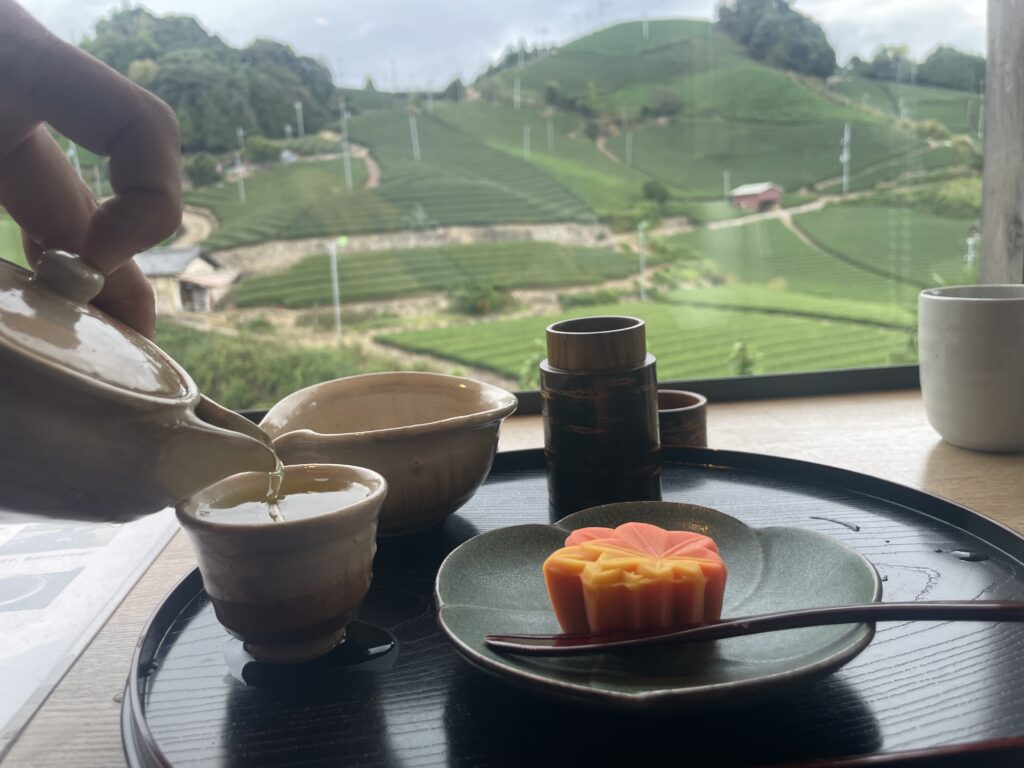
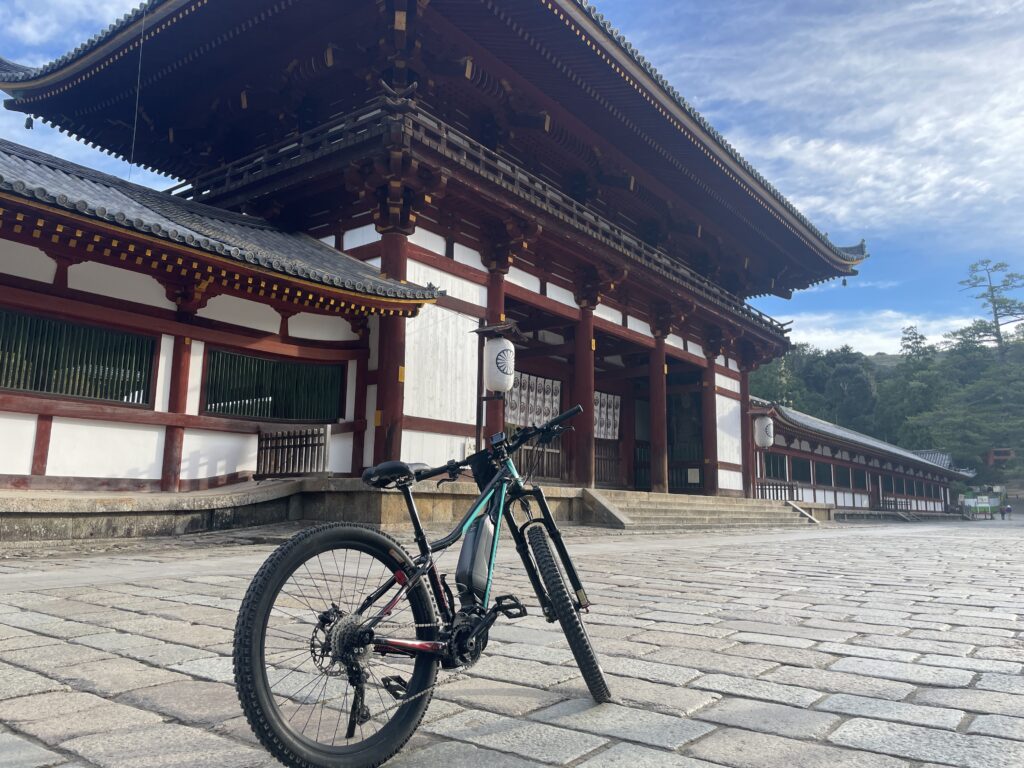
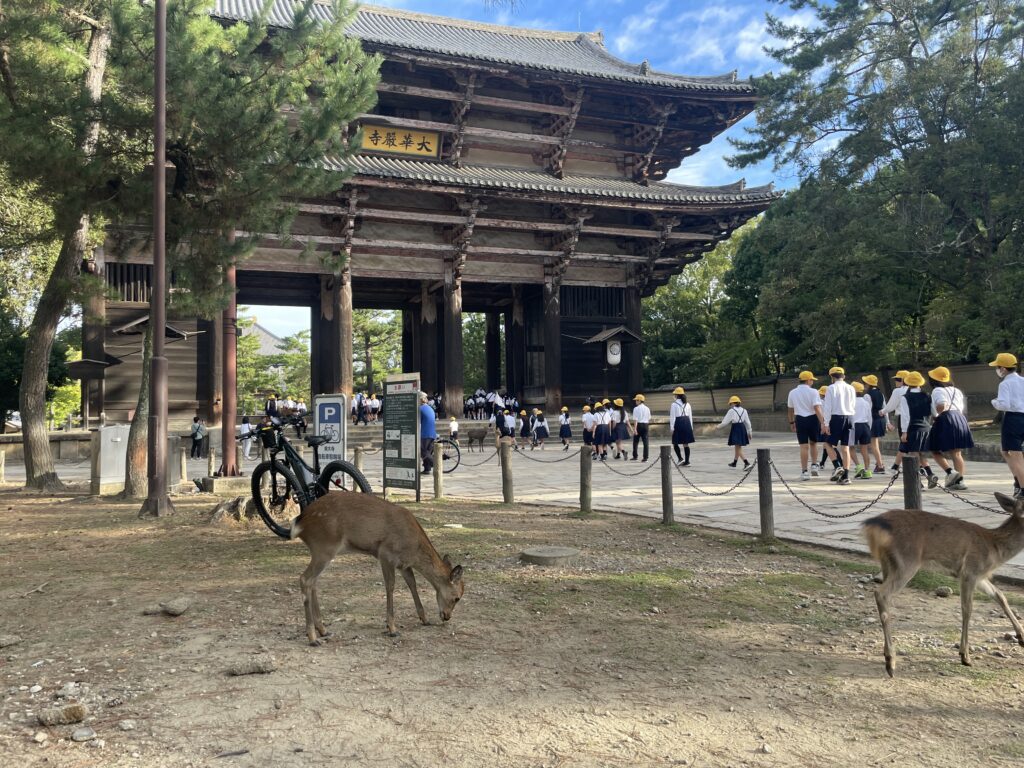
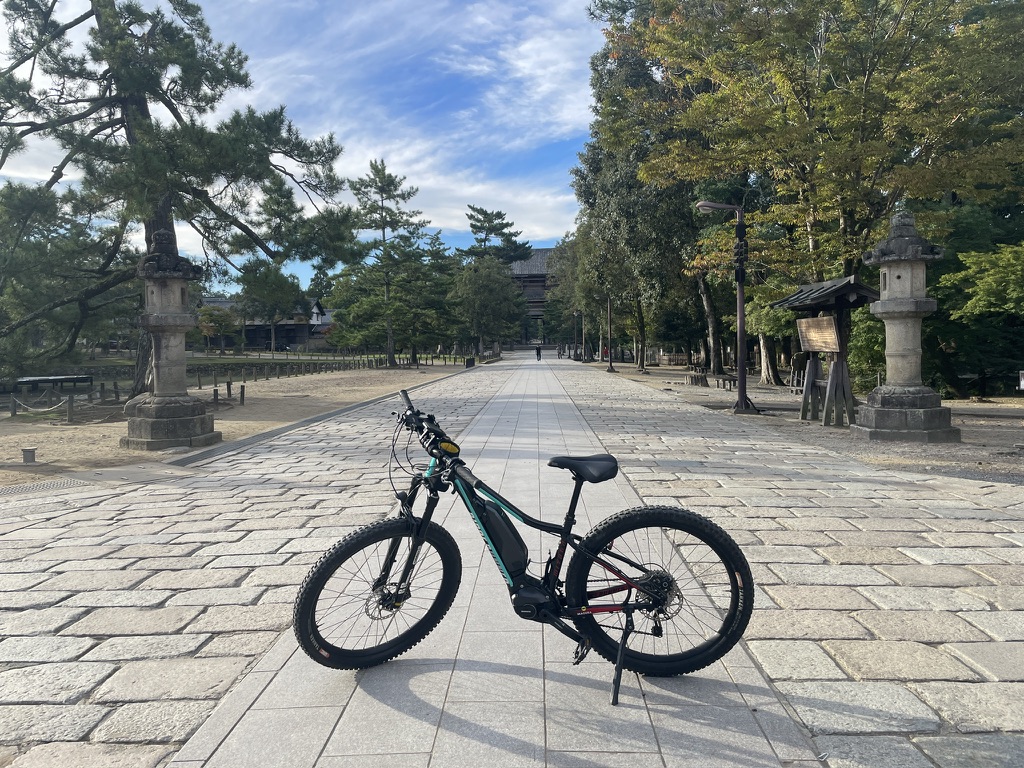
Please also refer to this article.
Kyoto~Wazuka Tea Fields & Nara(1~2days)
We will explain the cycling route through Japan's most historic tea plantations from the perspective of a cycl […]
How to enjoy cycling in Kyoto
① Rent a suitable bike
There is probably no other area where the quality of the bicycles determines the value of cycling as much as Kyoto.
There are many bicycle sharing and rental shops in Kyoto, but most of them are cheap and designed for very short distances, so they can be used as a simple means of transportation, but if you rent a high-performance model, the enjoyment will be many times greater.
We have also written an article summarizing rental stores in Kyoto City, so please take a look.
② Take a guided tour
It's fun to rent a bike and explore freely, but you'll get to know the area much better if you join a half-day tour with a local guide.
Here are some recommended guided tours.

